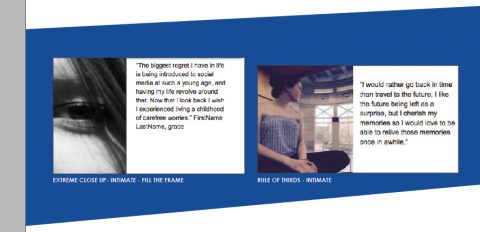The websites Humans of New York and StoryCorps are great examples of written and visual storytelling. Use them to teach your students how to get more personal interest stories into this year’s book if there’s time, or to start training next year’s reporters.
One of a journalist’s primary jobs is to tell compelling stories. Telling great stories starts with trust and a listener’s ear. For students to develop a few basic storytelling skills, using Humans of New York or StoryCorps interviews are a perfect place to start.
Between them, Dave Isay, TED Prize winner and founder of StoryCorps, and Brandon Stanton, founder of Humans of New York, have collected more than 75,000 stories from regular people around the world. Isay collects his stories as audio files, while Stanton takes a photo and then interviews his subject. But they’ve both developed fascinating techniques for helping people to open up.
Both Isay and Stanton agree that because people know they are simply focused on telling good stories – not exploiting people – they are able to build trust easily. Stanton says to approach your sources with a tone of genuine interest and compassion, and get to know them as people, with no judgment attached.
A good place to start is by having your students brainstorm how to create a trusting interview atmosphere.
Next, if you are using this as a day-one or week-one assignment at the beginning of the school year, or to teach next year’s staff this spring, students may not have been assigned beats or stories yet. Have them brainstorm abstract nouns or assign them nouns from which to create a list of interview questions.
This may also be a good time to discuss the difference between closed-ended and open-ended questions. Students will find that asking more open-ended questions will allow for interviewees to talk more and yield better opportunities for follow-up questions.
Give them 15-20 minutes to generate a list of questions. To mimic the style of Humans of New York, answers shouldn’t be longer than 50 words.
From time to time, Humans of New York will do a three- or five-part series, which is another option to extend this assignment. The StoryCorps audio format can be done as a written story; these are typically longer if you want more writing, around 250-300 words.
After students create a list of interview questions, it’s time to teach them the basics of photojournalism: rule of thirds, leading lines, framing and repetition. Also, teach them to take a variety of shots from different angles and play with the cropping to fill the frame or create more intimate shots.
Have them label the types of shots and choose the best one to fit the portion of their interview they choose to share.
Then, you are ready to set them free. They should conduct their interviews and, using the responses, take photos they think add to the storytelling details they learned through the interviewee’s answers. You can pair them with a classmate or let them choose a partner. Let them know it can take 30-40 minutes to conduct an interview and take photos. If you feel comfortable, you can allow students to use press passes outside to practice with outdoor lighting.
If students prefer a more StoryCorps audio or video approach, they can pair audio or video with images from their photo shoots. You can make this assignment as basic or as elaborate as they wish. No matter the route, the work produced makes for great social media posts and feature copy or sidebars in a yearbook.





